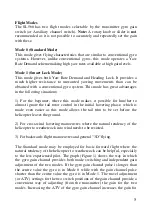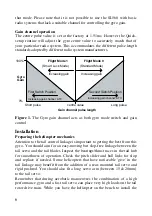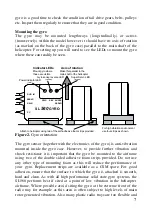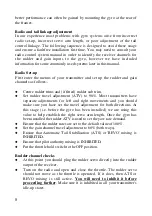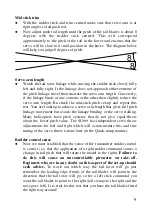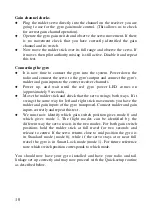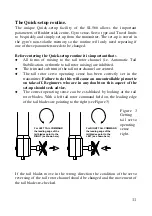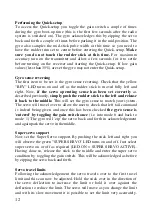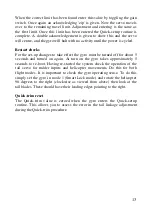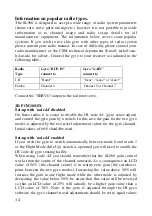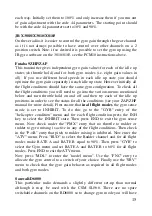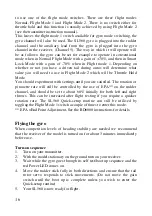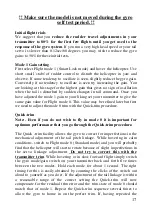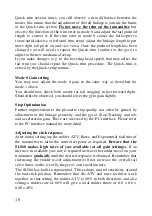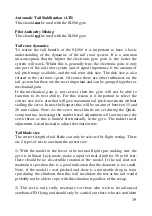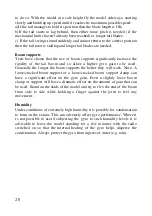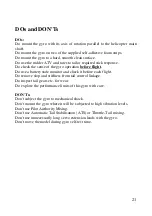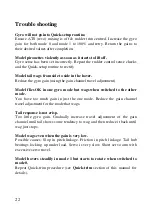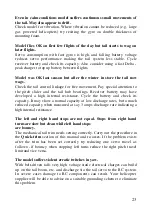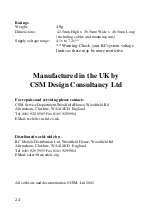
19
Automatic Tail Stabilisation (ATS)
This should
not
be used with the SL560 gyro
Pilot Authority Mixing
This should
not
be used with the SL560 gyro.
Tail rotor dynamics
To realise the full benefit of the SL560 it is important to have a basic
understanding of the dynamics of the tail rotor system. It is a common
misconception that the higher the electronic gyro gain is, the better the
system will work. Whilst this is generally true, the electronic gain is only
one part of the tail rotor system and of equal importance is the amount of
tail pitch range available, and the tail rotor disk size. The disk size is also
related to the tail rotor speed. Of course there are other influences on the
tail system but these are the most important and can be grouped together as
mechanical gain.
If the mechanical gain is not correct, then the gyro will not be able to
function to its best ability. For this reason it is important to select the
correct size servo arm that will give maximum tail pitch movement without
stalling the servo. In most helicopters this will be an arm of between 15 and
20 mm radius. Note: As the servo travel limits are set during the Quick-
setup routine, increasing the rudder travel adjustment will not increase the
servo throw as this is limited electronically in the gyro. The rudder travel
adjustment is used instead to adjust the rotation rate.
Tail blade size
The correct length of tail blade can only be selected by flight testing. There
are 2 types of test to ascertain the correct size:
1) With the model in the hover at its normal flight rpm, making sure the
gyro is in Smart Lock mode, make a rapid vertical climb for 50 to 60 feet:
there should be no discernible rotation of the model. If the tail does not
maintain its position this is a good indication that the diameter is too small.
Note: if the model is over pitched and there is a noticeable drop in rotor
rpm during the climbout, then this will invalidate the test as the tail would
probably not be able to cope with this situation regardless of the set-up.
2) This test is only really necessary for those who wish to do advanced
aerobatics/3D flying and should only be carried out those who are confident

